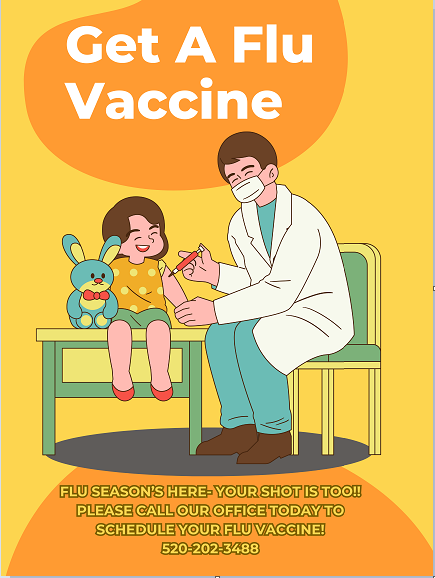 MENU
MENU
Dyson Medical | 2222 N. Craycroft Rd, Ste#150, Tucson, AZ 85712
Our walk in hours are
Monday – Thursday, 8:00am – 11:00am and 1:00pm – 4:00pm
Fever is the number one reason parents give their children medicine. With their relatively inexperienced immune systems, children catch anywhere from six to twelve infections a year. And when children get sick they get fevers.
Fever is a sign of an infection. It is part of the body’s defense against bacteria and viruses. Some researchers have suggested that the body fights infections more effectively when the body temperature is elevated. Remember that fever is only one sign of illness. How your child drinks and eats and sleeps and plays while sick is important. Symptoms like runny nose, cough, ear pain, vomiting, and diarrhea can also be important.
Each pediatrician has their own fever guidelines, but most would agree that your child doesn’t have a fever unless the temperature is higher than 100.4F.. Generally, you should call your pediatrician for any fever in a baby less than 2 months old and for fevers over 104F in older infants and children. Always check with me if you feel uncomfortable with how your child is doing–no matter the temperature.
It’s good to know whether your child’s fever is low grade (for example 101oF or 102oF) or at the higher end of the spectrum (such as temperatures over 104oF) .Unsure how to take your child’s temperature? See the section on “How to Take a Temperature.” Temperature varies with the child and even the time of day. Children’s temperatures tend to rise in the early evening and around 2am. This is when pediatricians get most of their phone calls about fever.
Parents and pediatricians treat fever for one simple reason: to make a child more comfortable. If your child has a low grade temperature that isn’t affecting their behavior, you do not need to give anything to lower the temperature.
Children with higher fevers may lie around and feel miserable. When you decrease higher fevers with medicine, the child often drinks better and often plays as if nothing were wrong. Remember that fever medications only lower a fever; they won’t make it go all the way back to normal again.
You can also lower your child’s fever with a lukewarm bath. Unless your child’s temperature is in the higher range, stripping a sick child down for a bath may be just as unpleasant as the fever itself. Remember, you’re trying to make your child more comfortable! Never sponge your infant or child down with alcohol to lower a fever. Alcohol absorbed through the skin can be dangerous.
It’s not unusual for sick children to have temperatures to 103oF, 104oF, or even 105oF. The important thing to remember is that a child’s temperature will usually stay fairly stable. Fevers due to infection rarely top 106oF. And while a temperature that high makes both child and parent uncomfortable, it is unlikely to cause brain damage if it is reduced fairly quickly. A small percentage of normal children from 6 months to 6 years of age may have seizures with high fevers, but even these febrile seizures do not usually cause brain damage if they are brief.
To damage the brain, you need temperatures of 108oF to 110oF. These are heat stroke temperatures. With heat stroke the entire body heats up from the environment. Heat stroke comes from exercising in super hot weather or being stuck in a car with the windows up on a hot day.
 X
X